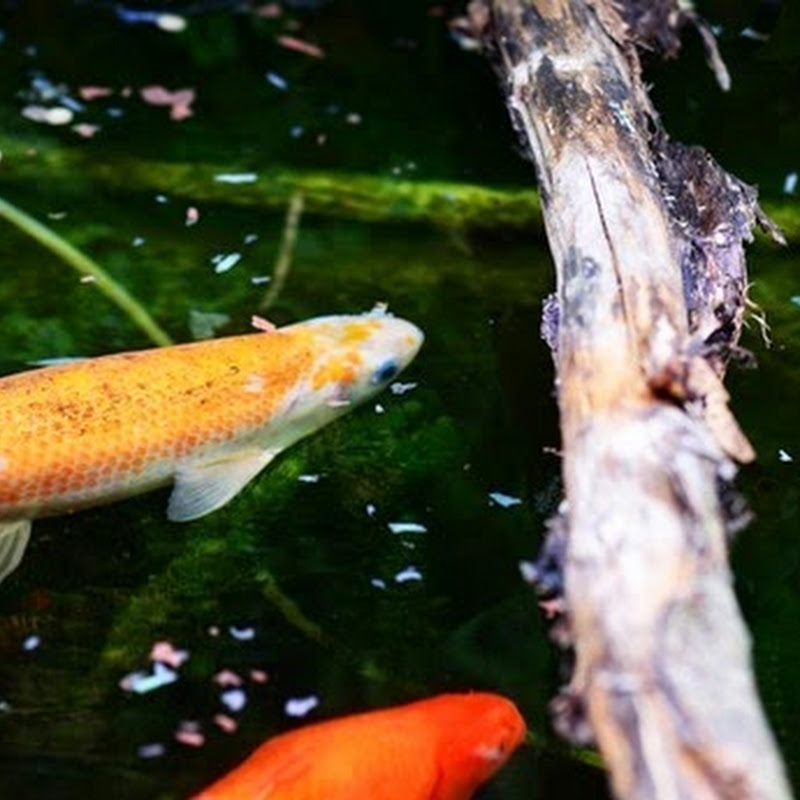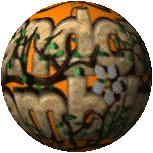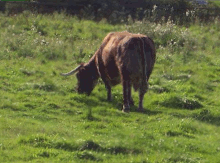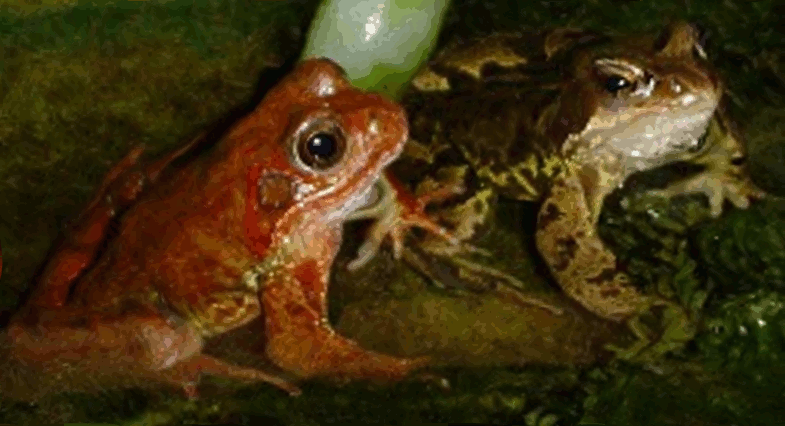Random Ramblings
Cat's cream dream
Sunday snippet
Here is a copy for you to click on to take a quick look:
What do you think? I think it's a great idea!
Little comment: I found this wonderful idea on a lovely blog called - This Is My Life
Sweet succulent Saturday surprise
Second little note: the robin has been making himself known today. He has perched for long periods on most of the items of garden furniture and has spent much time overseeing his claimed ground from one of the tallest of trees ... he's still 'k-tock,' k-tock,' k-tock'ing very loudly. I hope that it's not me that he's telling off so sternly!
Split nail - cracked nail
Every book I consulted advised rubbing either vegetable, nut oil or butter into the surface of the nail. Although I tried this, it didn't help. I carried on researching as the crack continued creeping downwards. Eventually, I did find a cure. It wasn't in any book but I discovered it quite by chance ...
the solution and cure was a supplement called Methyl Sulphonyl Methane, known as MSM for short. MSM is a sulphur compound, widely taken in its aiding in the rebuilding of cartilage within the joints. It has several useful side effects ... firstly, it strengthens nails and encourages natural growth (this part cured my nail crack) ... secondly, it is a useful aid for people that have sore or sensitive scalps.
MSM is usually available in tablets of 800mg from most health food and supplement stores.
Blue geranium
The common names for this flower is 'Meadow Crane's-bill' and 'Wood Crane's-bill' - the latter having the broader leaf ... my blue geranium is the broader leafed strain. Although classified as a wild flower it is very popular with gardeners as is has beautiful vivid flowers - flowering in June, July and August. It grows in medium sized clumps and is often placed in areas of the garden where the soil is poor but still produces an amazing display of bright flowers.
Little extra note: the robin has become lord of the bird table and was tucking in to some tasty pieces of Cox's Orange Pippin apples today ... carting little chunks of them away and on to a near by fruit tree!
Red breast
The robin flew into one of my pear trees and took up a guard position and even when I walked over to the tree it did not move. He was a cock robin that was shortly joined by another male that flew into a nearby apple tree then the pair proceeded to duel ... 'k-tock-k-tock-k-tock' the pear tree robin sounded out - shortly to be followed by a 'k-tock-k-tock'-k-tock' from the apple tree robin ... this duel of voices lasted for two-and-a-half hours. The pear tree robin won. The apple tree robin flew away.
The pear tree robin now owns the territory that includes both my garden and bird table!
Added note: I have decided to call the garden robin 'Puck' as it was first spied on Midsummer's day and Puck is the name given to Robin Good-fellow in Shakespeare's play 'A Midsummer-night's Dream.' Perhaps I could call the robin's wife Cobweb!
Sweet Home Blogger Award - Special thank you to Maitri
 June must be my lucky month as I have received a second blog award the 'Sweet home blogger Award!' which was very kindly bestowed upon me by Maitri at
Magic & Moments at Dragonfly Cottage
So thank you Maitri for this award.
It is customary with this particular award to pass it on to between one and five other blogs that stand out and on this occasion I have chosen two special blogs. The first is:
June must be my lucky month as I have received a second blog award the 'Sweet home blogger Award!' which was very kindly bestowed upon me by Maitri at
Magic & Moments at Dragonfly Cottage
So thank you Maitri for this award.
It is customary with this particular award to pass it on to between one and five other blogs that stand out and on this occasion I have chosen two special blogs. The first is:
MamaFlo's Place
MamaFlo's is a blog that I visit every day and she delights me with something different and original on every single instance. Please take a look for yourselves, you won't be disappointed.
The second blog that I have chosen is: Backcounter Buffet
I think that this blog has some lovely factual and interesting posts so please take a look and you'll discover a fresh and interesting place to visit.


Midsummer's Day
The large garden poppies are currently at their best and in just a few days the flowers will have all formed their seed pods ... only a vew stragglers will remain. If I am very lucky these early seeds will form a second display in late Autumn.
Midsummer Eve
I did spot an old favourite insect that reminds me of childhood ... the froghopper. This is one of those unexpected insects that brings giggles and gasps the first time that it is spied. For those of you who may never have seen one ... it is harmless ... and is usually very entertaining to young children. The adult looks remarkably frog like which is the first reason it was probably named froghopper - the second as its name describes it leaps, jumps or hops from leaf to leaf. Sometimes it jumps remarkable distances ... hence the gasps!
A female froghopper tends to lay batches of around eighty eggs in the hollows of dead plant stems late in the year. The young hatch out in the spring time into a little nymph. They then instinctively begin to climb up plant stems ... eventually they latch onto these and start sucking at the sap this helps them to make a protective cradle of frothy slime which they sink in to. The frothy bubbles are affectionately known as 'cuckoo spit' and the nymph will stay in this until it becomes a young adult and is able to jump to safety.
A basket of summer pickings
June is the month for listening . . . the cuckoo (the size of a small dove) arrived in April and lays one egg at a time in a host's nest. The cuckoo has the ability to change the colour but not the size of its eggs so that they resemble the eggs of the host's. The cuckoo's egg takes 12 days to hatch. Around this time of the month, the adult bird changes its tune. Some say that this is in preparation for its long flight back home to Africa to spend the winter months. They usually fly away in late July or early August and the juveniles follow in September.
An old verse about the cuckoo is:
"In April Cuckoo sings his lay, In May I sing all the day, In June I change my tune, In July away I fly, In August go I must."
Little note: after the cuckoo has hatched and as it begins to grow it pushes out the hosts babies one-by-one until it is the only offspring remaining in the nests. As the cuckoo often chooses small nesting birds in which to lay her egg the 'foster' parents wouldn't be able to rear their own young plus the extra large cuckoo chick. Survival instinct makes the large cuckoo chick instinctively 'murder' the little 'foster sister and brother' offsprings that share the nest.
The above pictures are the Iceberg floribunda rose and were taken in my garden. I have had this plant for years and it rewards me every year with hundreds of blooms that flower from late spring through to the first frosts.
Summer Solstice - first day of Summer
I had looked around the strawberry patch on Friday and the first of the fruits were well on their way to ripening. They all had white tips but will hopefully be ready for eating on Sunday. The strawberries are earlier than ever this year . . .
Little note: from this day the nights will now get longer (the nights draw in and the days get shorter).
Today is followed by the shortest night . . .
Arte y Pico Award
 I have received an Arte y Pico award. It was awarded to me with much thoughfulness by a lady who is inspirational in her words of wisdom and advice so may I say a special thank you to Debbie who has a wonderful blogspot called MamaFlo's Place
I have received an Arte y Pico award. It was awarded to me with much thoughfulness by a lady who is inspirational in her words of wisdom and advice so may I say a special thank you to Debbie who has a wonderful blogspot called MamaFlo's Place
"The "Arte y Pico" award was created and to be given to bloggers who inspire others with their creative energy and their talents, whether it be writing, artwork in all media's. When you receive this award it is considered a "special honour". Once you have received this award, you are to pass it on to at least 5 others." The special blogs I have chosen to pass this award on to are as follows:
The first blog, Health Nut Wannabee Mom is a place a visit that is both informative and interesting and I delve enthusiasitcally into her many rich posts. The second blog, Eastcoastlife always has something new and is festooned with so many photographs. The third blog, Patsy's Words of Wisdom has some interesting glimpses of life. The fourth blog, Chica and Pumuckl is a wonderful mixture of two beautiful cats. The fifth, ReenaShwina is an extensive mixture of so many things and you only find out her daily topic by a visit.
And please if you have a few moments to spare and enjoy a good read visit Debbie's blogspot by clicking onto her link below:

Cat nap
Firefox 3
Click for Firefox download . . .
*Extra note: if your mouse has got a wheel/middle mouse button, it will give you a speedy feature. Why? The middle button or wheel (click on it) allows you to open up pages in a new tab.
Dark in the dark, old garden - Shhhhh . . .
Any minute now . . .
 This is a picture of my visitors to-date. My map is about to be archived. As I have never had this done before I wanted to retain a picture of where all of my visitors originated from as I have such a diverse amount from almost every corner of the world! Any minute now - the map on the left will change and my red spots will go . . . all but those who have visited me very recently. So thank you . . . every red spot is appreciated - if you can see any place on here that I have not had a visit from and you know someone on the Internet from that place, then please pass on my blog address to them so that I can reach more people. Between us may be we can cover my map in red. Could this be done? Would it be possible? I would like to think so.
This is a picture of my visitors to-date. My map is about to be archived. As I have never had this done before I wanted to retain a picture of where all of my visitors originated from as I have such a diverse amount from almost every corner of the world! Any minute now - the map on the left will change and my red spots will go . . . all but those who have visited me very recently. So thank you . . . every red spot is appreciated - if you can see any place on here that I have not had a visit from and you know someone on the Internet from that place, then please pass on my blog address to them so that I can reach more people. Between us may be we can cover my map in red. Could this be done? Would it be possible? I would like to think so.
The Fly
Why would I want to be rid of it? Well, firstly this little fly type that resides all over the world in any human habitat, loves to paddle in excrement (any variety will do), then it will walk across food stuffs ... whether it is fresh in someone's house or rotting in an open wastebin or tossed aside on waste-ground. Finally, it will land on human skin ... bringing a variety of germs with it. The female house-fly will lay her eggs in any rotting material, refuse, animal dung or manure. Within a fortnight (fourteen days) the new generation has formed and taken flight. Each female house-fly will continue laying several clutches of her eggs throughout the warmer parts of the year.
Additional note: it has been found that people who eat Marmite (Vegemite) rarely if ever get bitten by mosquitoes. (May be someone will produce a tablet version or inoculation ... or even the odd pomander for those who try but just can't manage to eat it!)
NHS - National Health Service
LONG MAY THE NHS REIGN - HAPPY BIRTHDAY NHS!




















































